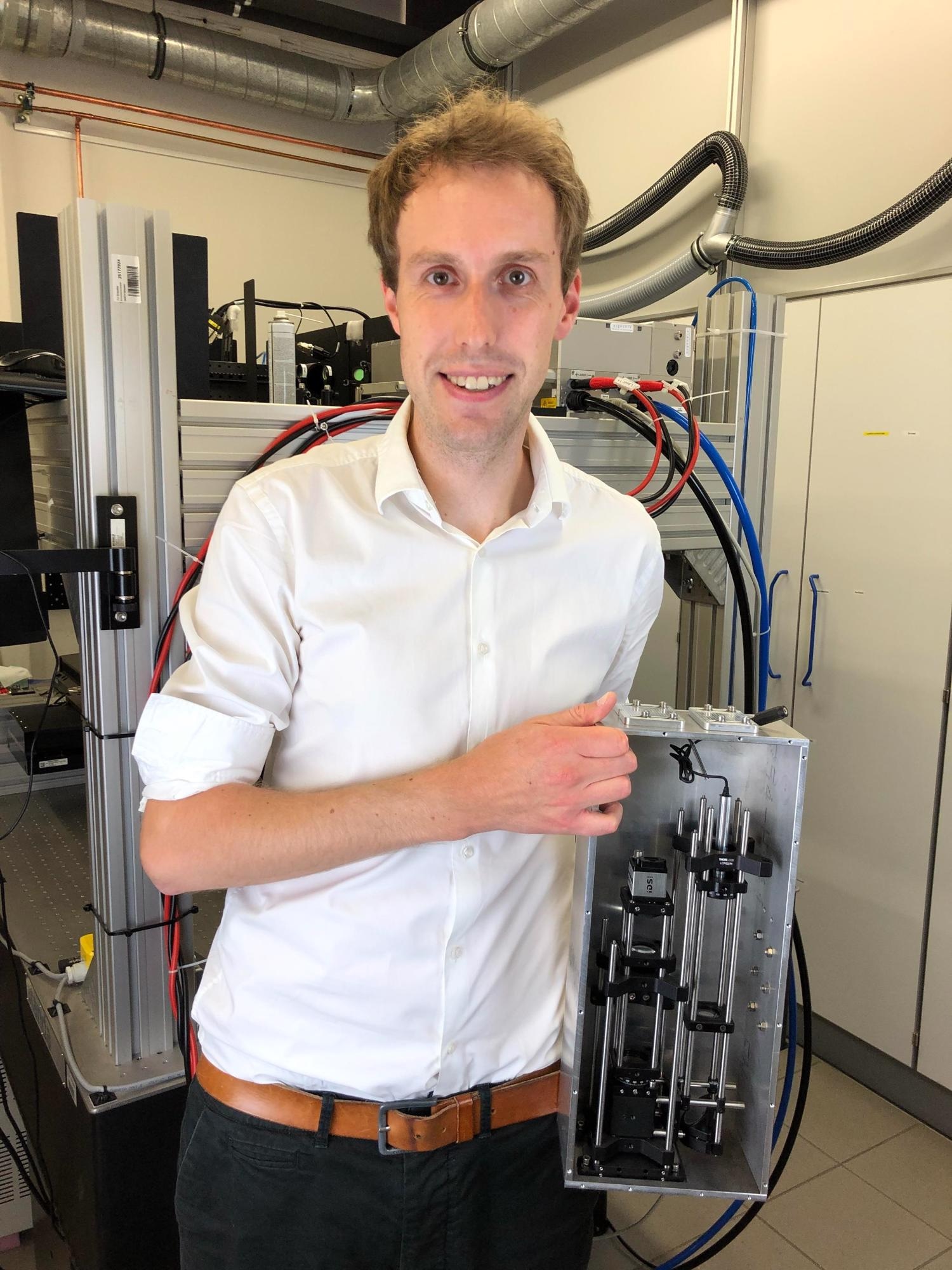The EU-funded project LAMpAS has just announced the successful development of a prototype in-line monitoring system for laser surface structuring by researchers of the Technische Universität in Dresden, Germany. The system allows monitoring of the process stability involved in laser structuring for the design of a new range of functionalized surfaces such as easy to clean finishes for ovens, fridges, and other home appliances.
 Figure 1 Nikolai Schröder with the prototype of the in-line monitoring system. Image Credit: LAMpAS
Figure 1 Nikolai Schröder with the prototype of the in-line monitoring system. Image Credit: LAMpAS
The significance of this new prototype lies in the fact that, until now, a main difficulty in microstructuring using the Direct Laser Interference Patterning method has been detecting deviations in the obtained topography of the surfaces. However, with LAMpAS’s prototype in-line monitoring system, a solution is at hand. It works by examining the light that is reflected from the laser-treated area using a mathematical approach known as Fourier analysis. This is performed by using a low-power laser diode to illuminate the processed surface and a camera to collect the pattern reflected from the surface. The recorded image is then analyzed by an algorithm, which is able to reveal changes in the shape and brightness of the reflected pattern. The upshot is that subtle deviations in the produced topography during the fabrication process can be detected and crucial information about the manufacturing process can be provided to the user.
The prototype consists of a custom designed hardware with an easy-to-use software and during the product development, special focus was given to achieve a compact and robust device. In the next steps, the researchers of the Technische Universität Dresden will focus on the final implementation and validation in real industrial manufacturing platforms.